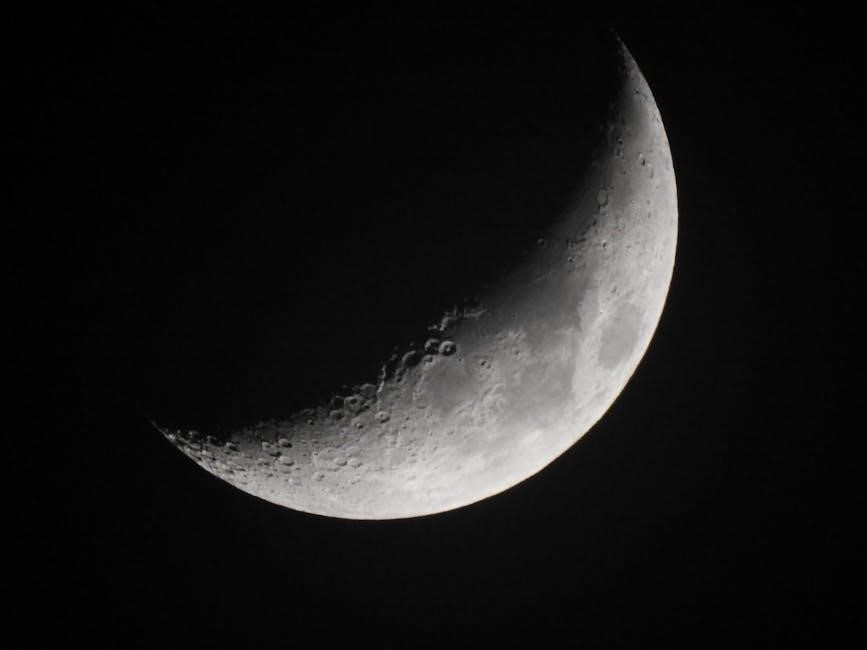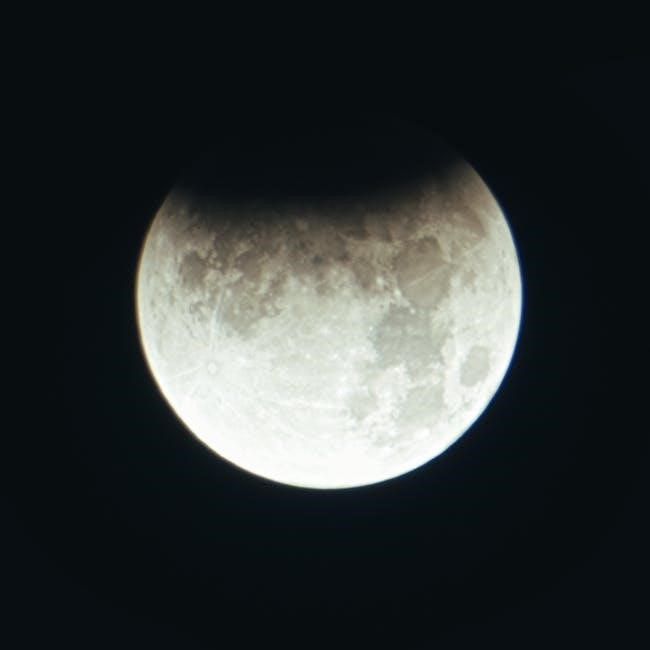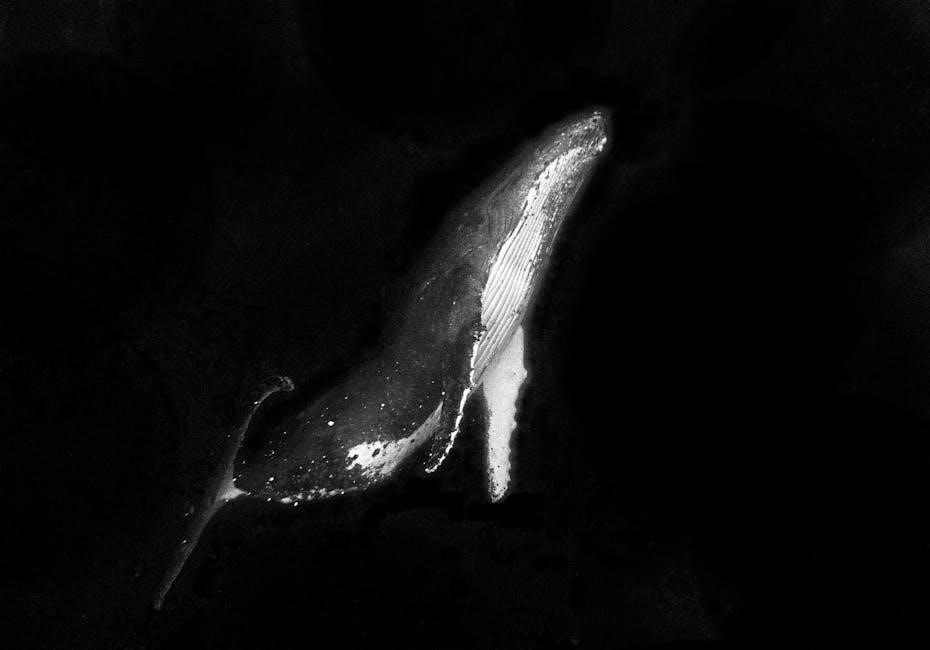PhET simulations are interactive tools that help students explore complex scientific concepts through virtual experiments. They are widely used in STEM education to enhance understanding and engagement.
The “Gravity and Orbits” simulation allows users to investigate gravitational forces‚ orbital motion‚ and celestial mechanics in an interactive and visually engaging environment‚ making abstract concepts more accessible.
1.1 What Are PhET Simulations?
PhET simulations are interactive‚ web-based tools designed to teach scientific concepts through exploration and experimentation. They are developed by the University of Colorado Boulder and cover topics like physics‚ chemistry‚ and biology. These simulations allow users to manipulate variables‚ visualize phenomena‚ and observe real-time effects‚ making complex ideas more accessible. PhET simulations‚ such as “Gravity and Orbits‚” are widely used in STEM education to engage students and deepen their understanding of key principles. They are free‚ accessible‚ and ideal for both classroom and independent learning.
1.2 Importance of PhET in STEM Education
PhET simulations play a crucial role in STEM education by providing interactive‚ visual tools that enhance understanding of complex concepts. They engage students through hands-on exploration‚ allowing them to experiment with variables and observe outcomes in real-time. This approach fosters deeper comprehension and critical thinking. PhET simulations like “Gravity and Orbits” make abstract ideas tangible‚ enabling students to visualize phenomena such as gravitational forces and orbital motion. Their accessibility and interactivity make them invaluable for both classroom instruction and independent study‚ catering to diverse learning styles and promoting STEM literacy.
1.3 Overview of the “Gravity and Orbits” Simulation
The “Gravity and Orbits” simulation offers an interactive platform to explore gravitational forces and orbital mechanics. Users can adjust parameters such as mass‚ distance‚ and velocity to observe their effects on orbital paths and gravitational interactions. The simulation provides visual representations of force vectors‚ velocity‚ and paths‚ making complex concepts like orbital motion and gravitational forces more accessible. It also includes scenarios involving celestial bodies‚ such as the Earth-Sun-Moon system‚ allowing users to visualize and experiment with real-world gravitational dynamics in a controlled environment.
Fundamental Concepts of Gravity and Orbits
Gravitational force governs orbital motion‚ with mass and distance determining its strength. Objects in orbit balance gravity with centripetal force‚ maintaining stable paths around larger celestial bodies.
2.1 Gravitational Force: Definition and Characteristics
Gravitational force is a universal‚ attractive interaction between two masses‚ governed by Newton’s law of gravitation. It depends on the masses’ sizes and the distance between them.
The force acts along the line connecting the centers of the masses and weakens with the square of the distance. This fundamental force is essential for maintaining orbital motion and celestial mechanics.
In the PhET simulation‚ users can visualize how gravitational forces change with mass and distance‚ providing insights into their role in orbital systems and cosmic phenomena.
2.2 Orbital Motion: Basics and Key Principles
Orbital motion describes how objects move in space under the influence of gravitational forces. It involves a balance between gravitational pull and the object’s inertia‚ resulting in elliptical or circular paths.
The principles of orbital motion include the concept of centripetal force‚ orbital velocity‚ and the relationship between mass‚ distance‚ and gravitational attraction. These principles govern the movement of planets‚ moons‚ and satellites in celestial systems.
In the PhET simulation‚ users can explore how altering mass‚ distance‚ and velocity affects orbital paths‚ providing a hands-on understanding of these fundamental dynamics.
2.3 Relationship Between Gravity‚ Mass‚ and Distance
Gravity is a force that attracts two objects based on their mass and the distance between them. According to Newton’s law of gravitation‚ the gravitational force increases with the product of the masses and decreases with the square of the distance.
In the PhET simulation‚ adjusting the mass of objects or altering the distance between them demonstrates how these factors influence gravitational force and orbital motion. This interactive approach helps visualize the inverse-square law and its impact on celestial mechanics.
PhET Worksheet: Gravity and Orbits
The worksheet accompanies the simulation‚ guiding students to explore gravitational forces‚ orbital motion‚ and Kepler’s laws through structured activities and questions‚ enhancing their understanding of celestial mechanics.
3.1 Structure and Objectives of the Worksheet
The worksheet is designed to guide students through the PhET “Gravity and Orbits” simulation‚ helping them explore gravitational forces‚ orbital motion‚ and Kepler’s laws. It includes structured activities and questions that prompt students to adjust parameters‚ observe results‚ and draw conclusions; The objectives are to enhance understanding of gravitational interactions‚ orbital mechanics‚ and the relationships between mass‚ distance‚ and velocity. By engaging with the simulation and worksheet‚ students develop critical thinking and problem-solving skills‚ fostering a deeper appreciation for celestial dynamics and their real-world applications in STEM fields.
3.2 Key Questions and Topics Covered
The worksheet focuses on essential questions about gravitational forces‚ orbital motion‚ and celestial mechanics. Key topics include the direction of gravitational force‚ factors affecting orbital paths‚ and the relationship between mass‚ distance‚ and velocity. Students explore how changing parameters like mass and distance impacts gravitational forces and orbital shapes. Additionally‚ the worksheet addresses Kepler’s laws‚ the Earth-Sun-Moon system dynamics‚ and visualizing orbital periods and speeds. These questions and topics are designed to deepen understanding of gravitational interactions and their practical implications in space exploration and physics.
3.3 How to Use the Simulation Effectively
To use the simulation effectively‚ start by adjusting parameters such as mass‚ distance‚ and velocity to observe their impact on gravitational forces and orbital paths. Enable gravity‚ velocity‚ and path visualization to track metrics in real-time. Run simulations to test hypotheses and reset to explore new scenarios. Interactive features allow users to move celestial bodies and observe changes in gravitational forces and orbital dynamics‚ providing hands-on insights into complex physics concepts. This approach fosters deeper understanding and encourages experimental learning.

Exploring Orbital Parameters
Orbital parameters such as mass‚ distance‚ and velocity significantly influence gravitational forces and orbital paths. Adjusting these variables in simulations reveals their interconnected effects on celestial mechanics.
4.1 Role of Mass in Orbital Motion
Mass plays a critical role in orbital motion by influencing gravitational force and orbital stability. Larger masses exert stronger gravitational pull‚ affecting the size and shape of orbits. In simulations‚ adjusting mass demonstrates how it alters orbital paths and velocities‚ providing insights into celestial mechanics and gravitational interactions. This hands-on approach helps students visualize and understand the fundamental relationship between mass and orbital behavior in our universe.
4.2 Effect of Distance on Gravitational Force
The gravitational force between two objects decreases as the distance between them increases‚ following the inverse square law. In simulations‚ adjusting the distance between objects visually demonstrates this relationship.Greater distances result in weaker gravitational forces‚ impacting orbital stability and velocity. This interactive exploration helps students understand how distance influences celestial mechanics and orbital behavior‚ reinforcing the fundamental principles of gravity and motion in space.
4.3 Understanding Velocity and Orbital Paths
Velocity plays a crucial role in determining the shape and stability of orbital paths. In simulations‚ increasing velocity can transform circular orbits into elliptical ones‚ while excessive velocity leads to escape trajectories. The gravitational force acts as a centripetal force‚ guiding objects along their paths. By adjusting velocity and observing orbital changes‚ students can visualize how speed influences orbital stability and shape. This interactive approach helps in grasping the relationship between velocity‚ gravitational force‚ and orbital mechanics‚ aligning with Kepler’s laws of planetary motion.

Kepler’s Laws and Orbital Motion
Kepler’s laws describe orbital motion‚ stating that orbits are elliptical‚ equal areas are swept in equal time‚ and orbital period relates to distance from the Sun.
5.1 Kepler’s First Law: Elliptical Orbits
Kepler’s First Law states that planets orbit the Sun in elliptical paths‚ with the Sun at one focus. This challenges the earlier belief in circular orbits. The PhET simulation illustrates how gravitational forces shape these elliptical trajectories‚ allowing users to visualize and experiment with orbital mechanics. By adjusting parameters like mass and distance‚ students can observe how elliptical orbits form and understand the underlying physics. This interactive approach helps clarify misconceptions and reinforces the fundamental principles of orbital motion described by Kepler’s laws.
5.2 Kepler’s Second Law: Equal Area in Equal Time
Kepler’s Second Law explains that a planet sweeps out equal areas in equal times as it orbits the Sun. This means the planet moves faster when closer to the Sun and slower when farther away. The PhET simulation visualizes this by showing how orbital speed changes with distance. Users can adjust parameters like eccentricity to observe how the planet’s velocity varies‚ aligning with the law. This interactive feature helps students grasp the relationship between orbital distance‚ velocity‚ and gravitational influences‚ reinforcing Kepler’s Second Law through hands-on exploration.
5.3 Kepler’s Third Law: Relationship Between Orbital Period and Distance
Kepler’s Third Law states that the square of a planet’s orbital period is proportional to the cube of its semi-major axis. In the PhET simulation‚ users can explore how orbital period changes with distance from the Sun. By adjusting parameters like mass and distance‚ students observe that planets farther from the Sun orbit more slowly‚ aligning with the law. This interactive visualization helps clarify the mathematical relationship (P² ∝ a³) and its implications for planetary motion‚ making abstract concepts more tangible and easier to understand.

Earth-Sun-Moon System Dynamics
The simulation allows users to explore gravitational interactions between the Earth‚ Sun‚ and Moon‚ visualizing orbital paths and forces. It helps understand celestial mechanics and tidal effects.
6.1 Earth’s Orbit Around the Sun
The Earth’s orbit around the Sun is elliptical‚ governed by gravitational forces. The simulation visualizes this motion‚ showing how the Sun’s gravity influences Earth’s path. Users can adjust parameters to observe changes in orbital velocity and distance‚ demonstrating Kepler’s laws. The PhET simulation highlights the balance between gravitational pull and centripetal force‚ making complex orbital mechanics accessible for study and exploration. This interactive approach helps students grasp the dynamics of celestial motion and the factors shaping Earth’s annual journey around the Sun.
6.2 Moon’s Orbit Around the Earth
The Moon’s orbit around the Earth is elliptical‚ influenced by gravitational forces. The PhET simulation demonstrates how the Moon’s velocity and distance affect its orbital path. Users can observe tidal forces and how they impact the Moon’s rotation and orbit. By adjusting parameters‚ students can explore the balance between gravitational pull and centripetal force‚ gaining insight into lunar motion. This interactive model simplifies complex orbital dynamics‚ helping learners understand the Moon’s orbit and its relationship with Earth.
6.3 Gravitational Forces in the Earth-Sun-Moon System
The Earth-Sun-Moon system is governed by gravitational forces that dictate their orbital patterns. The PhET simulation visualizes how gravity influences the Moon’s orbit and Earth’s rotation. By adjusting parameters‚ users can observe how gravitational forces between the Sun‚ Earth‚ and Moon affect tidal forces and orbital stability. The simulation highlights the delicate balance of gravitational interactions‚ enabling students to explore how these forces shape celestial mechanics and the behavior of the Earth-Sun-Moon system. This interactive approach simplifies complex gravitational dynamics for better understanding.
Simulation Setup and Controls
The simulation allows users to adjust parameters like mass‚ distance‚ and velocity. Enable gravity‚ velocity‚ and path visualization to observe orbital mechanics. Run or reset simulations as needed.
7.1 Adjusting Parameters: Mass‚ Distance‚ and Velocity
Users can modify mass‚ distance‚ and velocity to explore their effects on gravitational forces and orbital motion. Adjusting mass influences the gravitational pull between objects‚ while changing distance impacts the orbital period. Velocity adjustments alter the shape and stability of orbital paths. These controls enable precise experimentation‚ helping users visualize how parameter changes affect motion and forces in celestial mechanics. Real-time adjustments provide insights into the delicate balance of gravitational interactions and orbital dynamics‚ aligning with Kepler’s laws of planetary motion.
7.2 Enabling Gravity‚ Velocity‚ and Path Visualization
Enabling gravity‚ velocity‚ and path visualization enhances the learning experience by providing real-time insights into gravitational forces‚ motion‚ and orbital trajectories. Gravity vectors display the direction and strength of gravitational forces‚ while velocity vectors show the speed and direction of moving objects. Path visualization reveals the orbital shapes and patterns‚ allowing users to observe how adjustments to mass‚ distance‚ and velocity affect the system. These tools make complex concepts more tangible and facilitate deeper understanding of gravitational interactions and orbital mechanics.
7.3 Running and Resetting Simulations
Running the simulation allows users to observe the motion of objects under gravitational forces in real-time. To start‚ click the “Play” button and adjust parameters as needed. Pause the simulation to analyze specific moments or make precise measurements. Resetting the simulation returns all objects to their initial positions‚ enabling users to repeat experiments or explore different scenarios. This feature is essential for comparing outcomes and understanding the effects of parameter changes on gravitational interactions and orbital paths.
Analyzing Simulation Results
Analyzing simulation results involves observing orbital paths‚ measuring gravitational forces‚ and understanding velocity changes. This helps in interpreting how parameters like mass and distance affect motion;
8.1 Observing Orbital Paths and Shapes
Using the PhET simulation‚ students can observe how orbital paths change based on parameters like mass‚ distance‚ and velocity. By adjusting these variables‚ users can visualize how gravitational forces influence the shape of orbits‚ creating circular‚ elliptical‚ or other patterns. This feature helps in understanding Kepler’s laws‚ particularly the first law‚ which states that planets orbit the Sun in elliptical paths. The simulation also allows users to track the movement of celestial bodies and analyze how their paths evolve over time‚ providing insights into orbital mechanics and gravitational dynamics.
8.2 Measuring Gravitational Forces and Velocities
The PhET simulation enables users to measure gravitational forces and velocities in real-time‚ allowing for precise analysis of how these values change with adjustments to mass‚ distance‚ and orbital parameters. By utilizing the simulation’s built-in tools‚ students can observe how gravitational forces vary inversely with the square of the distance and directly with the product of the masses. Velocity measurements reveal how objects move along their orbital paths‚ providing insights into the dynamics of circular and elliptical orbits. This feature enhances understanding of gravitational interactions and orbital mechanics.
8.3 Understanding the Impact of Parameter Changes
Adjusting parameters such as mass‚ distance‚ and velocity in the PhET simulation demonstrates how these variables influence gravitational forces and orbital paths. Increasing or decreasing mass affects the gravitational force’s strength‚ while altering distance impacts the orbital radius and velocity. Velocity adjustments reveal how speed influences the shape and stability of orbits. These interactive changes provide a clear understanding of how each parameter contributes to the overall dynamics of orbital motion and gravitational interactions‚ making complex relationships more tangible for students.
Worksheet Answer Key Highlights
The answer key provides detailed solutions to questions about gravitational forces‚ orbital motion‚ and Kepler’s laws‚ ensuring clarity and accuracy for students completing the worksheet.
9;1 Answers to Key Questions About Gravity and Orbits
The answer key addresses fundamental questions such as the nature of gravitational force‚ orbital motion‚ and celestial mechanics. It clarifies that gravitational force is always attractive and acts along the line connecting two masses. Questions about orbital speed‚ the role of mass and distance in gravity‚ and the behavior of objects in circular or elliptical orbits are answered with clear‚ concise explanations. Additionally‚ it provides insights into how parameters like velocity and distance affect orbital paths‚ ensuring a comprehensive understanding of gravitational interactions.
9.2 Common Misconceptions and Clarifications
A common misconception is that gravitational force can be repulsive‚ but it is always attractive. Another misunderstanding is that objects in orbit are “falling” toward the central body. The simulation clarifies that orbital motion requires a balance between gravitational pull and centripetal force. Additionally‚ some students believe that increasing distance reduces gravitational force linearly‚ while it actually decreases with the square of the distance. These clarifications help students grasp the fundamental principles of gravity and orbital dynamics accurately.
9.3 Tips for Completing the Worksheet Accurately
To complete the worksheet accurately‚ enable gravity‚ velocity‚ and path visualization in the simulation. Adjust parameters like mass‚ distance‚ and velocity to observe their effects on orbital motion. Run multiple simulations to compare results and identify patterns. Ensure to measure gravitational forces and velocities accurately using the simulation tools. Review the answer key to clarify any misunderstandings and verify your responses. Pay attention to the balance between gravitational force and centripetal force for stable orbits. These steps will help you master the concepts effectively.

Visualizing Orbital Mechanics
The simulation provides vivid visualizations of orbital paths‚ gravitational forces‚ and celestial interactions‚ helping users understand complex mechanics through interactive and dynamic graphical representations.
10.1 Sizes and Distances in the Simulation
The simulation accurately visualizes the relative sizes and distances between celestial bodies‚ enabling users to comprehend the vast scales of space. It allows adjustments to distances‚ illustrating how gravitational forces and orbital periods change with varying separations. This feature helps students grasp the relationship between distance and gravitational effects‚ making complex orbital mechanics more intuitive and accessible for learning.
10.2 Visualizing Gravitational Forces and Their Effects
The simulation provides a clear visualization of gravitational forces‚ allowing users to observe how these forces influence orbital paths and celestial body interactions. By enabling gravity and velocity visualization‚ students can see the dynamic effects of gravitational forces in real-time. The simulation also offers tools to adjust parameters like mass and distance‚ demonstrating how these changes impact gravitational interactions and orbital stability. This visual representation simplifies complex concepts‚ making them easier to understand and analyze.
10.3 Understanding Orbital Periods and Speeds
The simulation helps visualize how orbital periods and speeds are influenced by gravitational forces and celestial body interactions. By adjusting parameters like mass and distance‚ users can observe changes in orbital velocity and period. The visualization tools provide insights into how faster-moving objects complete orbits more quickly‚ while slower ones take longer. This interactive approach clarifies the relationship between gravitational forces‚ orbital speeds‚ and the time it takes for objects to complete their orbits‚ enhancing understanding of orbital mechanics and celestial motion dynamics.

Real-World Applications of the Simulation
The simulation aids in understanding satellite orbits‚ space exploration‚ and planetary motion‚ providing insights into gravitational forces and orbital mechanics applicable to real-world astronomical phenomena and engineering.
11.1 Space Exploration and Satellite Orbits
The PhET “Gravity and Orbits” simulation is invaluable for understanding satellite orbits and space exploration. By adjusting parameters like mass‚ distance‚ and velocity‚ users can explore how satellites maintain orbit and travel efficiently through space. This helps in planning missions and predicting orbital paths‚ ensuring satellites remain in stable orbits and fulfill their intended purposes.
Such simulations also aid in educating students about the practical applications of gravitational forces in launching and managing satellites‚ preparing them for real-world challenges in aerospace engineering and astrophysics.
11.2 Understanding Planetary Motion in Our Solar System
The PhET “Gravity and Orbits” simulation provides a dynamic way to explore planetary motion in our solar system. By visualizing orbital paths and gravitational interactions‚ users can better understand how planets move around the Sun. Adjusting parameters like mass and distance demonstrates how these factors influence orbital patterns‚ aligning with Kepler’s laws. This tool helps students grasp the principles governing planetary motion‚ making complex astronomical concepts more tangible and engaging for learners of all levels.
11.3 Practical Implications of Gravitational Forces
Gravitational forces have significant practical implications in satellite technology‚ space exploration‚ and understanding celestial mechanics. The PhET simulation demonstrates how gravitational interactions influence orbital paths‚ essential for predicting satellite trajectories and ensuring stable orbits. By studying these forces‚ scientists and engineers can design more efficient space missions and understand phenomena like tidal forces and planetary stability. These principles also explain the Moon’s orbit stabilizing Earth’s axis‚ highlighting gravity’s critical role in maintaining cosmic balance and enabling life as we know it.
The PhET “Gravity and Orbits” simulation effectively teaches complex gravitational and orbital concepts through interactive exploration‚ making physics accessible and engaging for students of all levels.
12.1 Summary of Key Concepts
The PhET “Gravity and Orbits” simulation demonstrates that gravitational force is always attractive and depends on mass and distance. Orbital motion is governed by these forces‚ shaping paths like circles or ellipses. Kepler’s laws explain orbital periods and distances‚ while velocity and path visualization help understand dynamics. Adjusting parameters like mass‚ distance‚ and velocity reveals how they influence gravitational forces and orbital stability. This simulation provides a hands-on approach to exploring celestial mechanics and the Earth-Sun-Moon system‚ making complex physics concepts engaging and accessible for learners.
12.2 Importance of Simulations in Learning Physics
Simulations like PhET’s “Gravity and Orbits” are invaluable in physics education‚ offering interactive‚ visual learning experiences that simplify complex concepts. They enable students to explore gravitational forces‚ orbital mechanics‚ and celestial dynamics in a controlled environment. By allowing experimentation with variables like mass‚ distance‚ and velocity‚ simulations foster deeper understanding and critical thinking. Such tools bridge the gap between theory and practice‚ making abstract ideas tangible and engaging for learners of all levels.
12.3 Final Thoughts on the Worksheet and Simulation
The PhET “Gravity and Orbits” simulation and its accompanying worksheet are powerful tools for exploring gravitational forces and orbital mechanics. They provide an interactive‚ hands-on approach to understanding complex physics concepts. The simulation’s ability to visualize orbital paths‚ adjust parameters‚ and measure forces makes it an invaluable resource for both students and educators. By reinforcing theoretical knowledge with practical experimentation‚ the worksheet complements the simulation‚ ensuring a comprehensive and engaging learning experience. These resources are essential for fostering a deeper understanding of gravity and orbital dynamics in STEM education.



